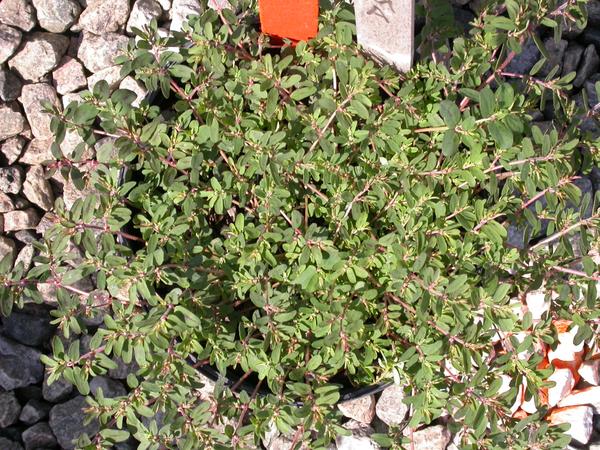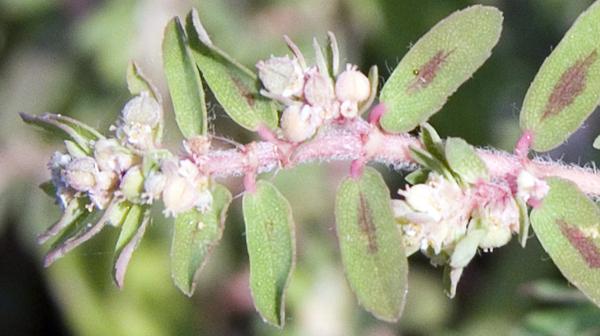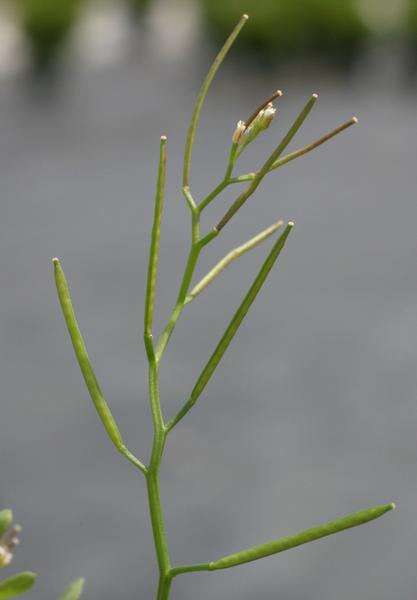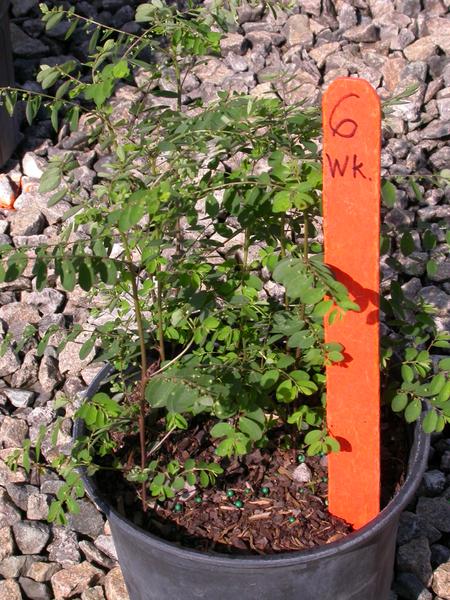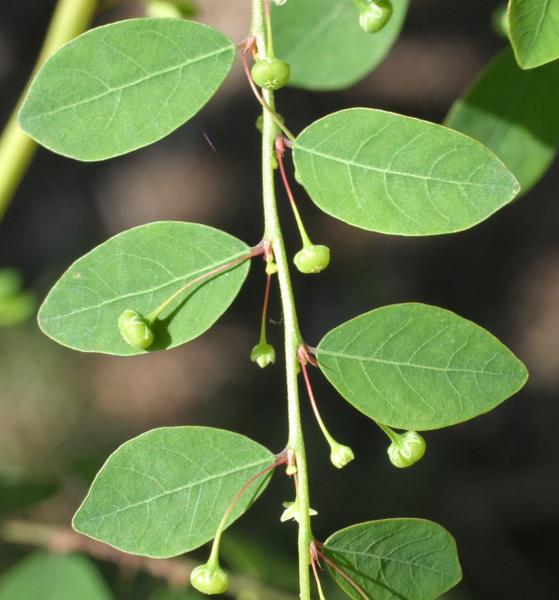How Often Are You Weeding? Is It Frequently Enough to Prevent the Next Generation of Weeds?
Many of the most common weeds of container nurseries flower and produce seeds within 30 days. Our research suggests that you should be removing emerged weeds every 2 to 3 weeks. This prevents rapid population growth and spread, and can reduce hand weeding labor labor costs by around 40%. For more information on reducing your weed control costs check out the information on Cost Effective Weed Control in Container Nurseries.
These photos are of 6-week old weeds in containers and illustrate how rapidly many common nursery weeds reach reproductive maturity.
Spotted Spurge - Our Most Common Summer Weed
Spotted spurge can produce flowers within 21 days after seeding, and in another 10 days will have mature seed pods ready to begin the next generation. Additionally, spotted spurge seeds are forcefully expelled several feet from the mother plant.
Bittercress - Our Most Common Cool-Season Weed in Containers
Similarly, bittercress can flower and fruit within 30 days. Each plant producing more than 5,000 seeds and “shooting” the seeds 4 to 6 feet away to infest nearby crops. In this way, not only does bittercress spread rapidly in container nurseries, but populations rapidly increase.
Longstalked Phyllanthus Takes a Bit Longer to Reproduce
Longstalked phyllanthus is a common warm-season annual weed in container production. This species can flower within 30 days and will have mature seed pods within six weeks. You have a bit more time to remove this weed than you do for spurge or bittercress, but don't get complacent. Phyllanthus is not well controlled by many of our commonly used herbicides. It also can forcefully expel its seeds 4 to 6 feet from the mother plant.
What Can You Do About It?
Sanitation is a critical component of any weed management plan. Removing weeds before they can go to seed will pay dividends in the future by reducing the seedbank, limiting the spread of weeds, and making future weed control efforts more effective and less costly. Check out our information on nursery sanitation practices for weed control and reducing weed populations and spread in your nursery.
Publication date: Oct. 15, 2018
N.C. Cooperative Extension prohibits discrimination and harassment regardless of age, color, disability, family and marital status, gender identity, national origin, political beliefs, race, religion, sex (including pregnancy), sexual orientation and veteran status.

